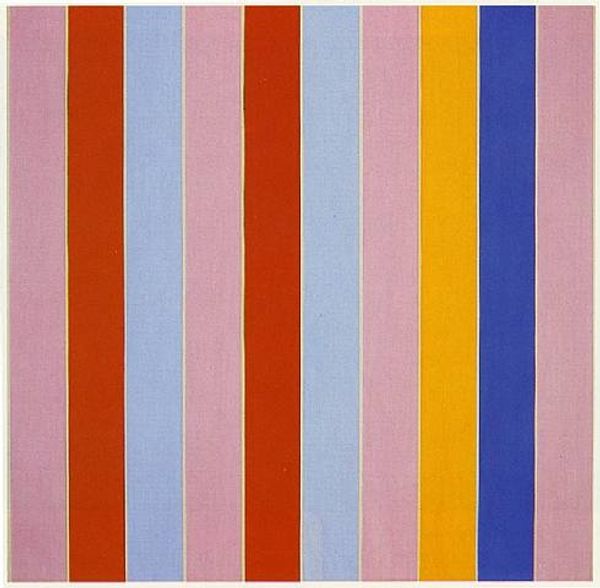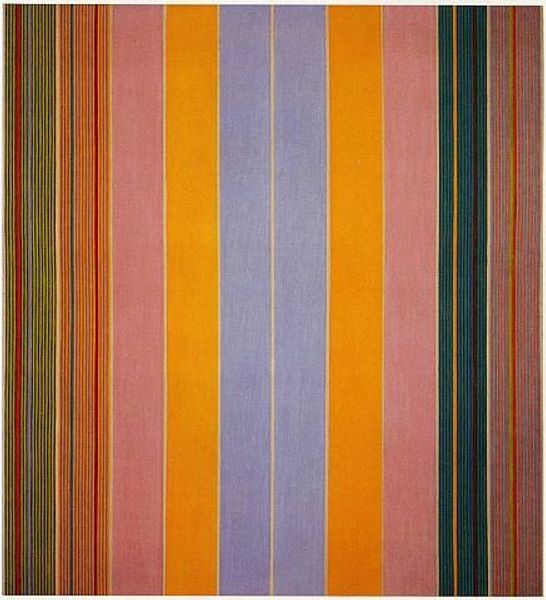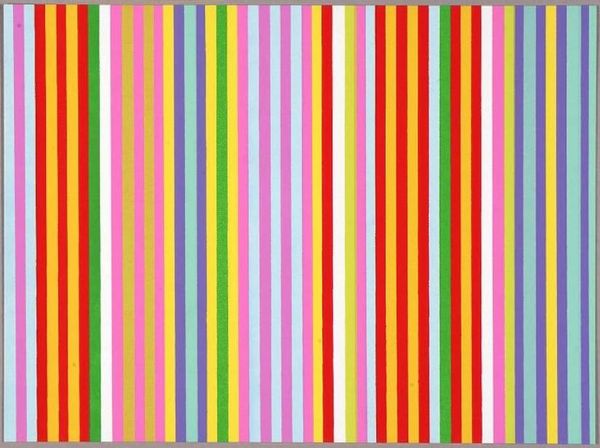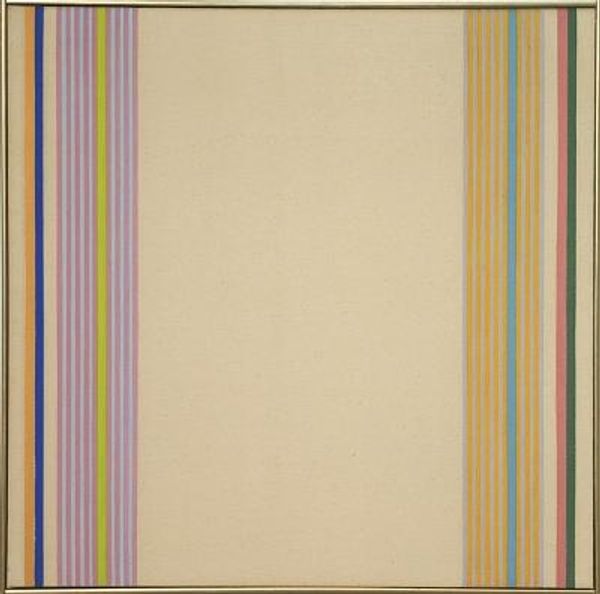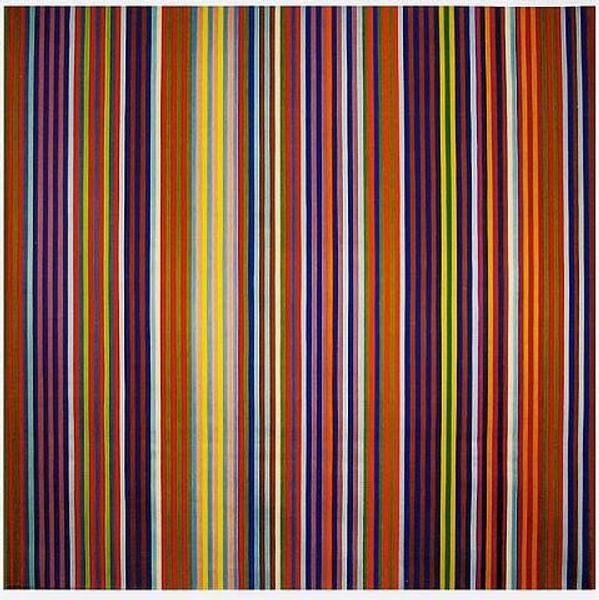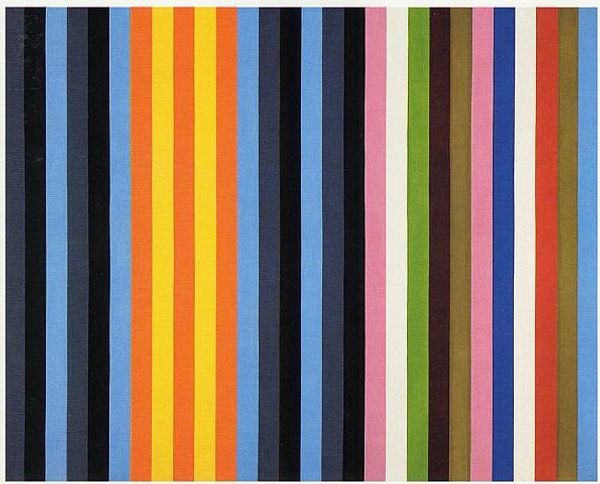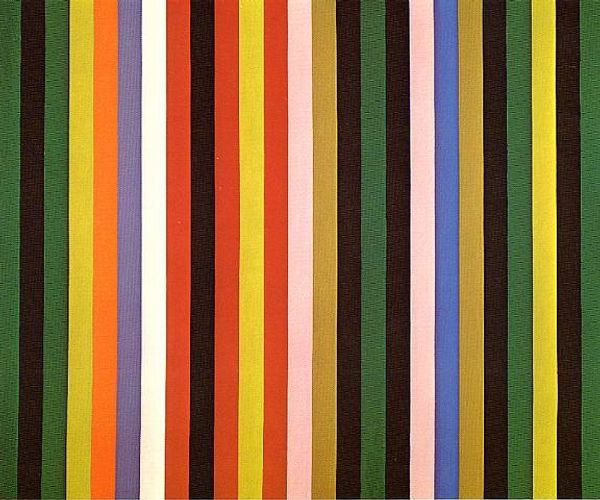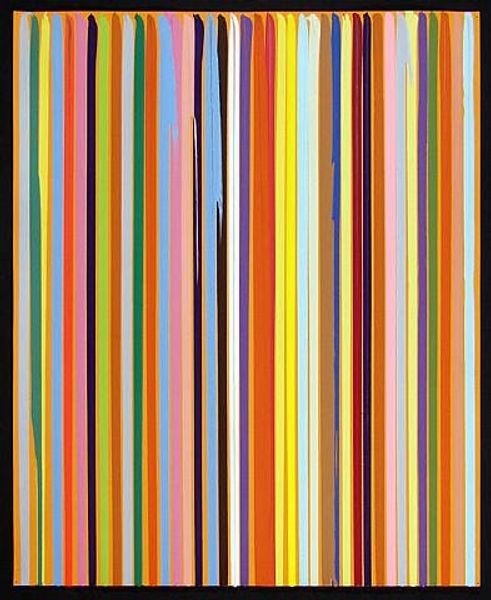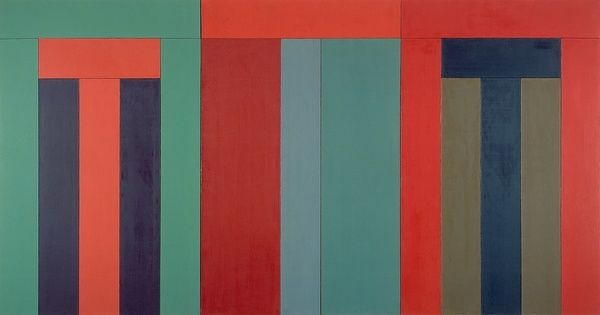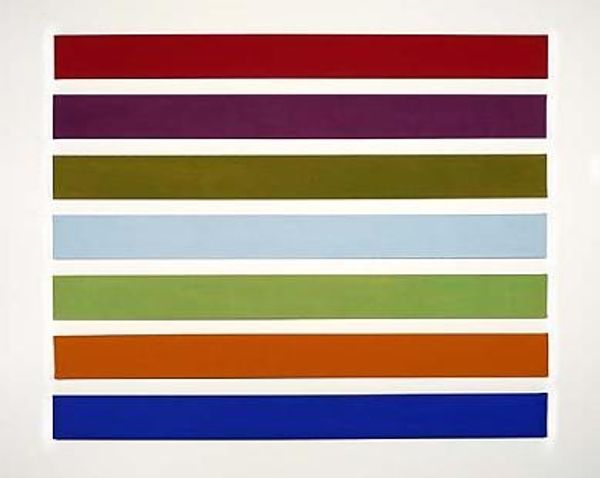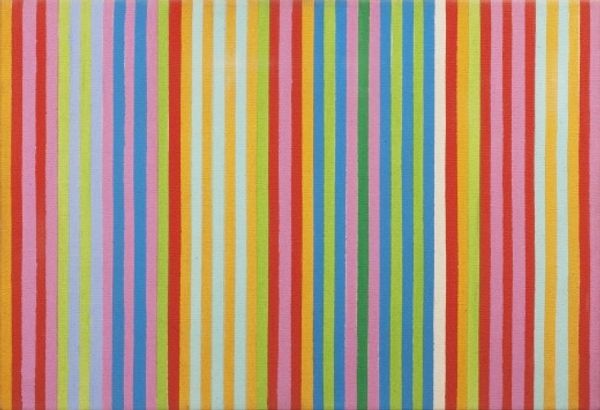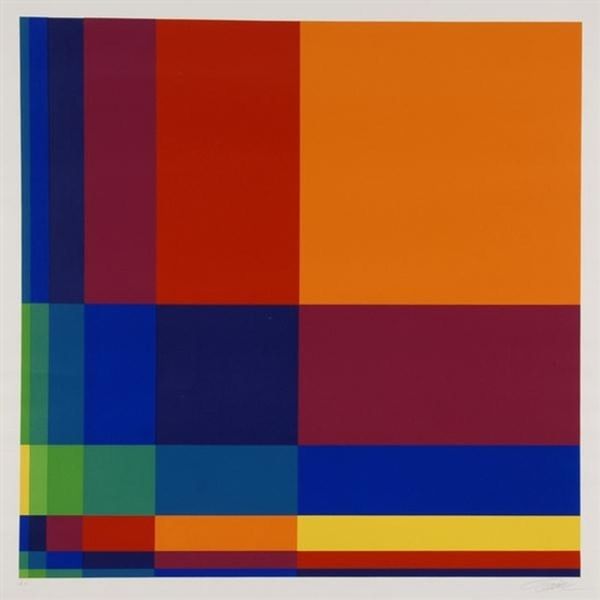
painting, textile, acrylic-paint
#
painting
#
textile
#
colour-field-painting
#
acrylic-paint
#
geometric pattern
#
geometric
#
vertical pattern
#
abstraction
#
line
#
modernism
Dimensions: 246.38 x 302.26 cm
Copyright: Gene Davis,Fair Use
Editor: So, this is Gene Davis’ "Homage to Matisse" from 1960, acrylic on textile. It's surprisingly serene. The vertical lines feel rhythmic, like visual music almost, but why is it called "Homage to Matisse"? What do you see in this piece? Curator: The vertical lines evoke the iconic "stripe paintings" which reverberate through our cultural memory, holding significant weight, and here are deliberately set against an unpainted textile. Davis is engaging with Matisse's legacy, specifically Matisse's late-career cut-outs and use of color. Do you see a connection between this work, in its apparent simplicity, with memory? Editor: I do see a sort of simplicity, but I suppose the homage is lost on me. I don't necessarily get the same feeling as when viewing Matisse's cut outs or color blocks. How can these minimalist stripes convey that connection so strongly? Curator: Precisely because of the *reduction*. Think about the essence of Matisse. Color and composition. By reducing it to nearly pure color and line, Davis distills Matisse's spirit, relying on our memory of Matisse's joyously radical color to fill in the blanks. Those vertical lines themselves almost resemble paper cutouts, echoing Matisse's process. Does that give you a new reading? Editor: That makes sense! It is like an echo of his spirit and vision, even if it doesn't visually align directly. The use of the canvas really reinforces that element of emptiness allowing the stripes and colors to stand alone with a visual crispness that is captivating. Curator: Exactly. He is calling upon our collective cultural memory to complete the picture, adding layers of emotional meaning to something seemingly minimal. Editor: It's amazing how much meaning can be packed into such a simple composition. I will now forever look at it in new ways!
Comments
No comments
Be the first to comment and join the conversation on the ultimate creative platform.
